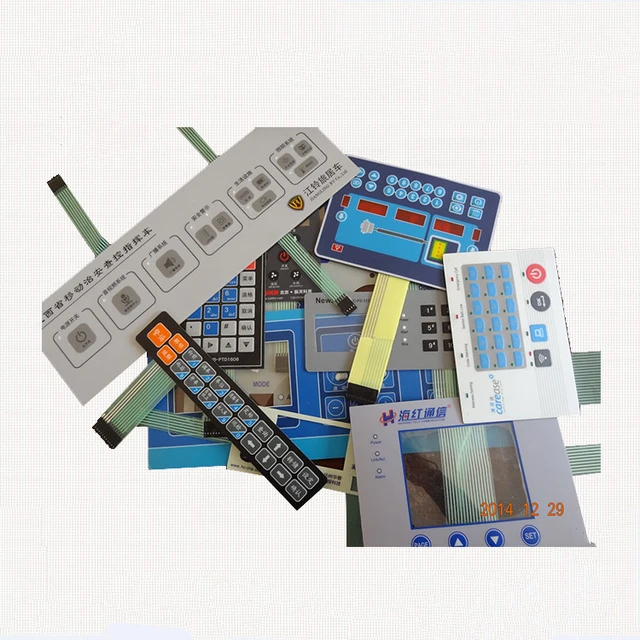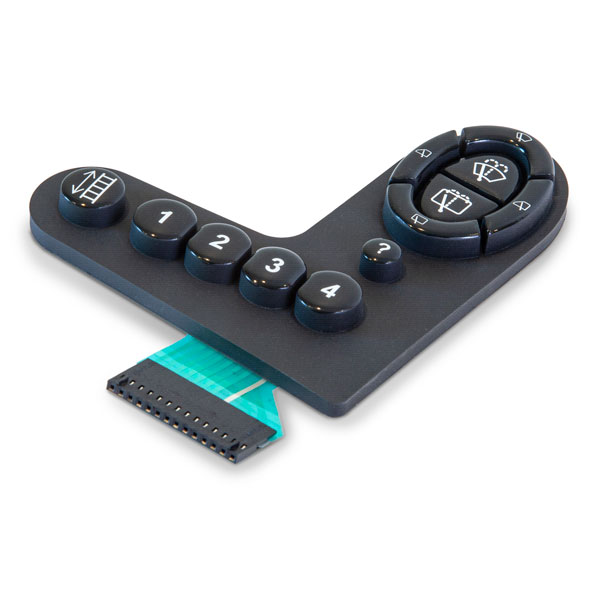The Advantages of Using Membrane Switches in Customer Electronics
Membrane switches are increasingly identified for their significant advantages in customer electronics, specifically in improving customer interaction and streamlining manufacturing processes. Their capability to provide instinctive interfaces and responsive responses can substantially decrease customer errors, while their light-weight building and construction and simplified production steps add to cost-effectiveness and quicker market access. The convenience in design enables for customized remedies that meet diverse customer demands. The effects of these benefits extend beyond simple capability, hinting at a transformative possibility for the future of digital devices. What further advantages might become this modern technology advances?
Boosted User Experience

In today's affordable landscape of consumer electronic devices, improved user experience is extremely important; almost 85% of users focus on user-friendly interfaces. Membrane layer changes play a critical duty in attaining this degree of use.
The tactile feedback offered by membrane switches is crucial for directing user actions, ensuring that commands are registered accurately. This responses mechanism reduces errors and enhances customer satisfaction, fostering a favorable partnership in between the user and the device. The personalized nature of membrane layer switches allows manufacturers to customize interfaces to certain user demands, making tools more obtainable and welcoming.
In addition, membrane switches can include backlighting and visuals overlays, even more boosting presence and functionality in varied settings. This adaptability guarantees that gadgets stay user-friendly and functional, despite the setting. In general, the combination of membrane layer switches over right into customer electronic devices dramatically boosts customer experience, driving brand name commitment and satisfaction in an increasingly competitive market.
Affordable Manufacturing
Consumer electronic devices makers are frequently looking for means to stabilize high quality with cost, and membrane switches supply an engaging option for economical manufacturing. These components are inherently less complex than typical mechanical switches, which lowers both manufacturing expenses and complexity. The light-weight style of membrane switches permits for reduced shipping expenditures and less complicated combination into portable gadgets, even more enhancing their allure in an open market.
Producers can generate membrane layer switches in high quantities, capitalizing on economic climates of range. This automation ability makes certain consistent high quality while significantly lowering per-unit prices. Furthermore, the materials utilized in membrane buttons, such as polyester and polycarbonate, are frequently more economical than those needed for traditional button innovations, adding to overall price savings.
The production process for membrane switches over normally requires fewer actions and less labor contrasted to other switch kinds. This streamlined technique not just reduces labor prices but additionally accelerates time-to-market, enabling firms to respond quickly to customer demand. As a result, the mix of reduced product expenditures and effective manufacturing processes positions membrane layer switches over as a smart financial investment for manufacturers aiming to provide high-quality consumer electronics at affordable rate factors.

Layout Versatility and Customization
While standard mechanical switches typically enforce limitations on layout due to their bulk and important source called for mounting systems, membrane layer switches give exceptional adaptability and customization choices for customer electronic devices. This innovative innovation permits developers to create smooth, inconspicuous user interfaces that can seamlessly integrate right into numerous item visual appeals, from mobile phones to cooking area appliances.
Membrane switches can be created in essentially any shape or size, enabling producers to customize the design to details ergonomic and useful needs. This adaptability not only enhances user experience but also enables for creative styles that line up with brand identity. The usage of published graphics on membrane switches offers the opportunity for elaborate designs and vibrant shades, which can be quickly customized without significant price effects.
Furthermore, membrane buttons can include several functionalities into a solitary layer, decreasing the need for numerous elements and simplifying setting up processes. This streamlined style method minimizes room and weight, making it suitable for small consumer electronic devices. In general, the layout versatility and customization capacities of membrane layer switches empower manufacturers to introduce, eventually bring about even more engaging and easy to use products.
Longevity and Dependability
As modern technology remains to advance, the sturdiness and reliability of membrane buttons have ended up being critical factors to consider for manufacturers in the consumer electronic devices industry (membrane switch). Membrane buttons are designed to stand up to go to website harsh environmental problems, including temperature level variations, moisture, and dirt exposure. Their durable building often includes multi-layered products that give an efficient obstacle versus impurities, guaranteeing durability and regular performance

In addition, membrane buttons can endure a substantial number of actuations without loss of capability, often going beyond millions of cycles. This longevity translates to reduce substitute prices and decreased downtime for makers and customers alike. Generally, the mix of environmental resilience and mechanical dependability makes membrane layer switches over a strategic choice for consumer electronics, making sure that tools remain efficient and functional throughout their desired life-span.
Streamlined Item Growth
The resilience and integrity of membrane layer switches over substantially contribute to structured product growth in the customer electronic devices field. By incorporating these buttons early in the layout procedure, suppliers can lower the intricacy and variety of elements needed in their products (membrane switch). Membrane switches are light-weight and portable, enabling much more efficient space utilization within tools, which can bring about streamlined setting up processes
Additionally, the personalization abilities of membrane buttons make it possible for designers to tailor features especially to customer requirements without incurring too much prices or delays. This adaptability cultivates technology, as business can rapidly repeat styles based on market responses, inevitably speeding up the time-to-market for new items.
The convenience of producing membrane layer switches additionally plays a critical role in item development. With modern-day printing techniques and products, manufacturing can be scaled effectively, minimizing lead times and lowering waste. This results in reduced manufacturing costs, boosting overall success.
Verdict
In final thought, membrane layer changes substantially improve customer electronics by offering an enhanced individual experience, affordable manufacturing processes, and versatile design options. The assimilation of membrane layer switches over stands for a calculated option for producers seeking to optimize item layout and performance.
Membrane layer buttons are progressively acknowledged for their significant benefits in customer electronics, particularly in enhancing customer interaction and improving production procedures. Furthermore, the materials made use of in membrane layer switches, such as polyester and polycarbonate, are often much less costly than those required for standard button technologies, adding to general cost financial savings.
The production process for membrane layer changes typically needs less steps and much less labor contrasted to other button types. Unlike traditional Resources mechanical buttons, which may put on out over time, membrane switches use a sealed style that reduces the threat of mechanical failure.In verdict, membrane switches over substantially enhance customer electronic devices by supplying an improved individual experience, cost-effective production procedures, and flexible layout options.